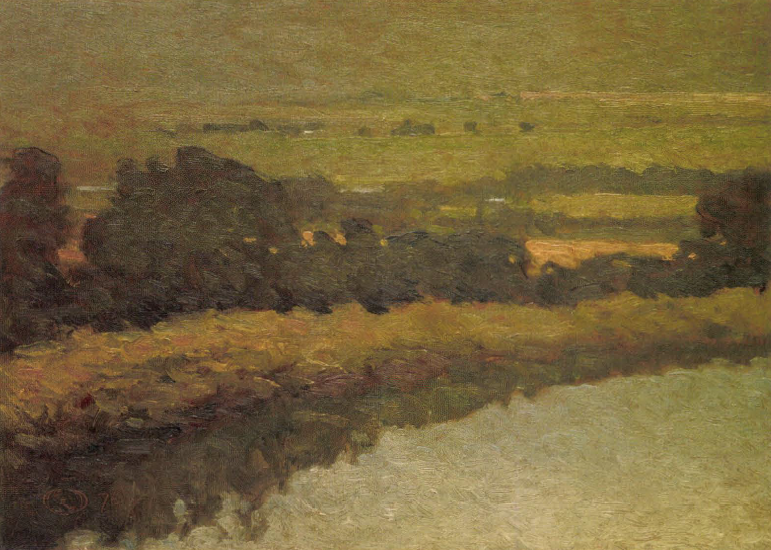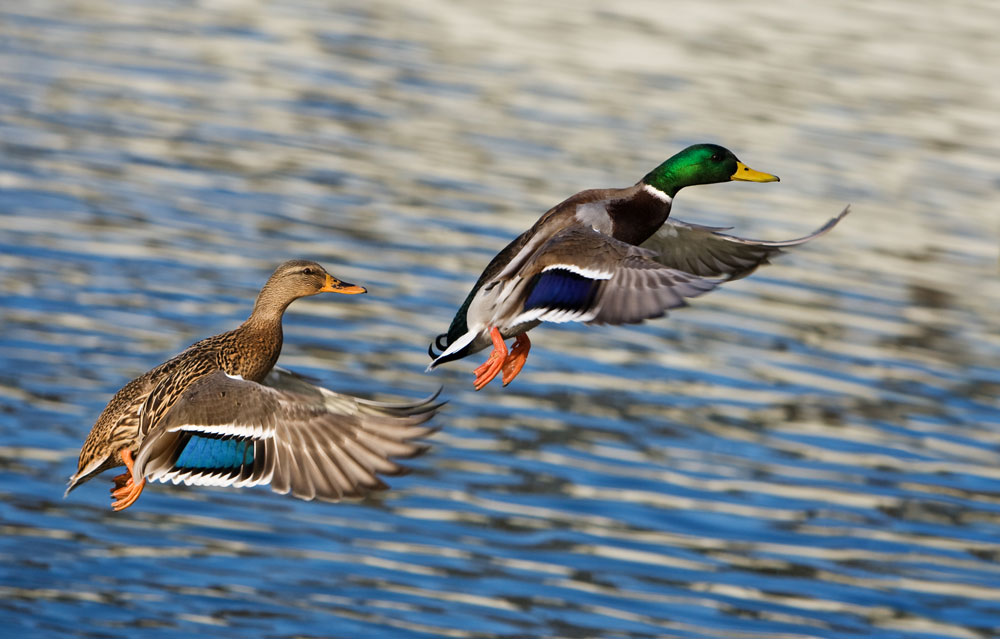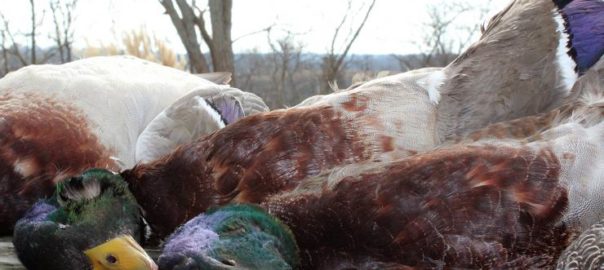The hill’s contour was pink with slanting light, so much like a Russell Chatham painting. I looked down at the large gray breast of the mallard and thought about the meal to come.
I rounded a bend of a winding, western Montana creek, and the heads of two mallard drakes hummed green as they lifted from a corner pool. I beaded the lead duck, but he balked at my pattern, then swung out over the willow tangle. The other continued up the creek. I traced him with my barrel, and he crumpled into a snowbank. After retrieving the bird, I watched the near hillside, a thin film of smoke from California fires drifted over the crest. The hill’s contour was pink with slanting light, so much like a Russell Chatham painting. I looked down at the large gray breast of the mallard and thought about the meal to come.
With the one-year anniversary of Russell Chatham’s death just passed and duck season fully underway in most states, I’m reminded of the passion Chatham held for eating waterfowl: “When I see a duck, even one of those on a city-park pond that take bread crumbs out of the palms of old ladies, the desire to kill and eat is nearly Satanic.” Chatham’s paintings are most recognizable because while he lived, they adorned the covers of books by the likes of Jim Harrison, Dan Gerber, Thomas McGuane and Rick Bass. Primarily a Western landscape painter, he held a fundamental belief for how one should cook their duck: “All game, especially wild duck, should be cooked rare. If you don’t like it, you should stick to gruel or corned beef hash.”
I’ve parsed this recipe from Chatham’s essay, “The Great Duck Misunderstanding,” which begins his book of outdoor writing, Dark Waters, published by Clark City Press in 1998. I’ve included ingredient measurements, even though Chatham would thumb his nose at such strict instruction for an activity he would probably depict as closer to lovemaking than food preparation. These measurements are mere suggestions. There are even some ingredients I no longer use. Follow the recipe like advice from a good friend. Only take what you need. But please, whatever you do, don’t let your oven dip below 450 degrees Fahrenheit. Otherwise you’ll be dining on a breast so awful Chatham believed that “a date with an icebox full of wet hair would be preferable.”
Russell Chatham’s Roast Duck
Serves 2
Ingredients:
- 1 whole duck (mallard was used for this recipe)
- ½ cup of duck stock
- ¼ cup of red wine
- 1½ tbsp of olive oil
- 2 tbsp of Worcestershire sauce
- ½ shallot finely minced
- 2 bay leaves
- 3 tbsp butter
- 1 tsp of pepper
- ¼ onion roughed chopped
- ½ lemon
- ¼ cup of currants
- ¼ cup of brandy
The duck stock— integral to the sauce—must be made ahead of time. Use the duck carcass from a previous duck meal and boil in water with onion, carrots, parsley, celery, salt and pepper. Any basic stock recipe will work.
Preheat Oven to 500 degrees Fahrenheit.
Rinse the plucked and gutted duck with cold water, then pat dry with paper towels. Salt and pepper the duck skin. Liberally cover the duck with two tbsp of room temperature butter. Use more if necessary. Stuff the cavity “extra loose” with the roughly chopped onion, remaining butter and a splash of wine.
Begin to soak the currants in the brandy.
Once the oven is preheated, place the duck on a shallow roasting pan and bake. Big ducks (mallards) for 20-23 minutes. Medium ducks (wood ducks) for 14-16 minutes. Small ducks (teal) for 10 minutes.
While the bird is cooking, sauté the shallots and olive oil in a small saucepan until the shallots are fragrant. Pour the duck stock into a pan, add two bay leaves, bring to a simmer and reduce for one minute. Add the Worcestershire sauce, brandy-soaked currants and several squeezes of lemon. Bring to a simmer again then strain. Return to the pan with no heat.
Once the duck is finished in the oven, let the bird rest on a wire rack for three minutes. While the bird rests, reheat the sauce in the pan. Carve the meat off the bone, then lay the halved duck in the sauce skin-side up for ten seconds to take the “blood-rare edge away from the carved face.”
Remove the duck from the sauce and press the juice out of the halved birds. If you don’t have the “wonderful kitchen utensil not much in demand around the suburbs these days: a duck press,” use a plate or a small, sturdy skillet. Pour this duck au jus into the stock.
Chatham served the duck with a good brie, toasted French bread—rubbed with garlic clove and excessively buttered—and any “old, heavy, aromatic red” wine.
Eat with company who won’t mind a grease-smeared wine glass.

“Pond on a Summer Afternoon” by Russell Chatham
Last night I ate the mallard drake with my wife on our snow-flecked porch. The slices of baguette used to soak up the last of the sauce turned the bread the shade of the mountains in Chatham’s painting, “Moonrise over the Absarokas.” Blush of purple filling the webbed dough.
Our duck meal differed greatly from the kinetic dinner Chatham describes in his essay: “Our wine glasses become increasingly grease-smeared as we pick up each carcass and suck it down to bare bone and gristle. We carelessly gulp the fancy vintages. Our shirt fronts are ruined. Juice and blood run from elbows onto knees and the floor. The room is blurred. We belch, fart, laugh and groan.”
Still, Nikea and I quietly celebrated the pleasure that comes with chewing the last bit of crispy skin from a wild duck. Bones stacked neatly on our blue plates. Conversation turning lazily around work and plans for a grocery run tomorrow. All of this backlit by the moon rising over our hill. Air still hazy from the fires to the west that stopped burning a month ago.
 Within the pages of The Ultimate Guide to Cooking Wild Game, twenty-five popular game animals are highlighted and discussed. Amateur and experienced hunters alike will enjoy learning about each animal’s origin, range, migration and travel patterns, life span, size and weight, typical habitat, desired foods, why the particular animal is targeted, where it can be hunted, along with hunting tips and why it makes for excellent table fare.
Within the pages of The Ultimate Guide to Cooking Wild Game, twenty-five popular game animals are highlighted and discussed. Amateur and experienced hunters alike will enjoy learning about each animal’s origin, range, migration and travel patterns, life span, size and weight, typical habitat, desired foods, why the particular animal is targeted, where it can be hunted, along with hunting tips and why it makes for excellent table fare.
Each dish is paired with a suggested wine to further enhance your dining experience among friends and family. There’s also helpful tips on proper field dressing equipment, refrigerator and freezer space, proper packaging and storing, defrosting and food safety, and tools and kitchen essentials. Buy Now




